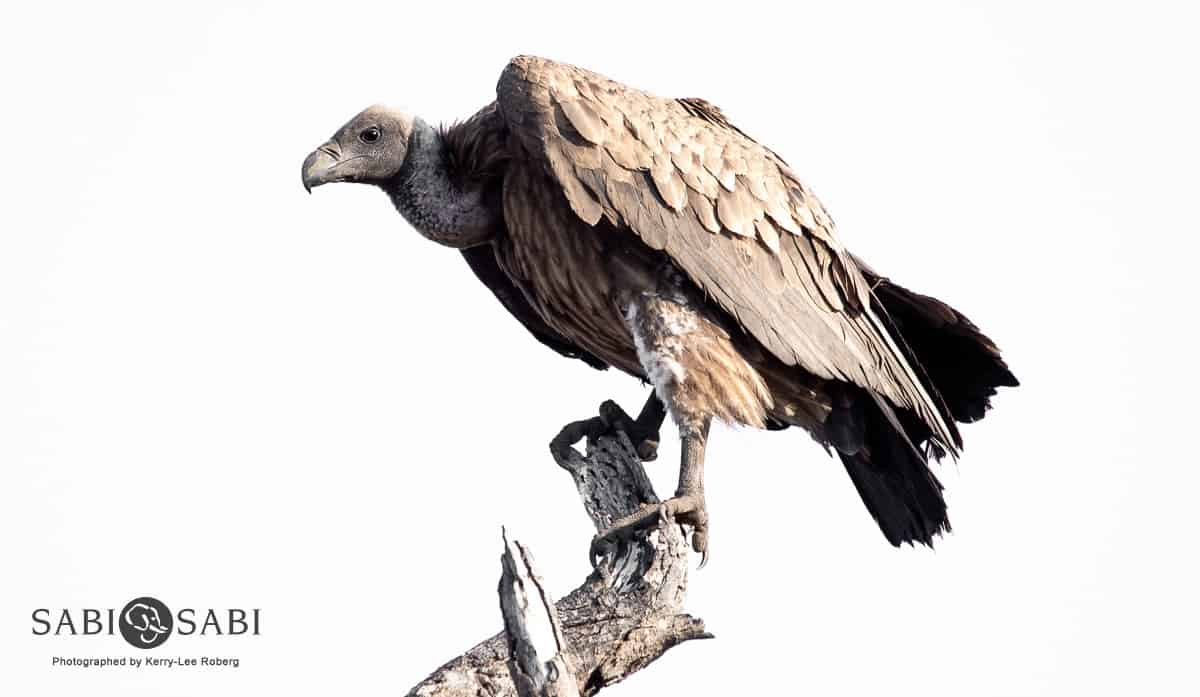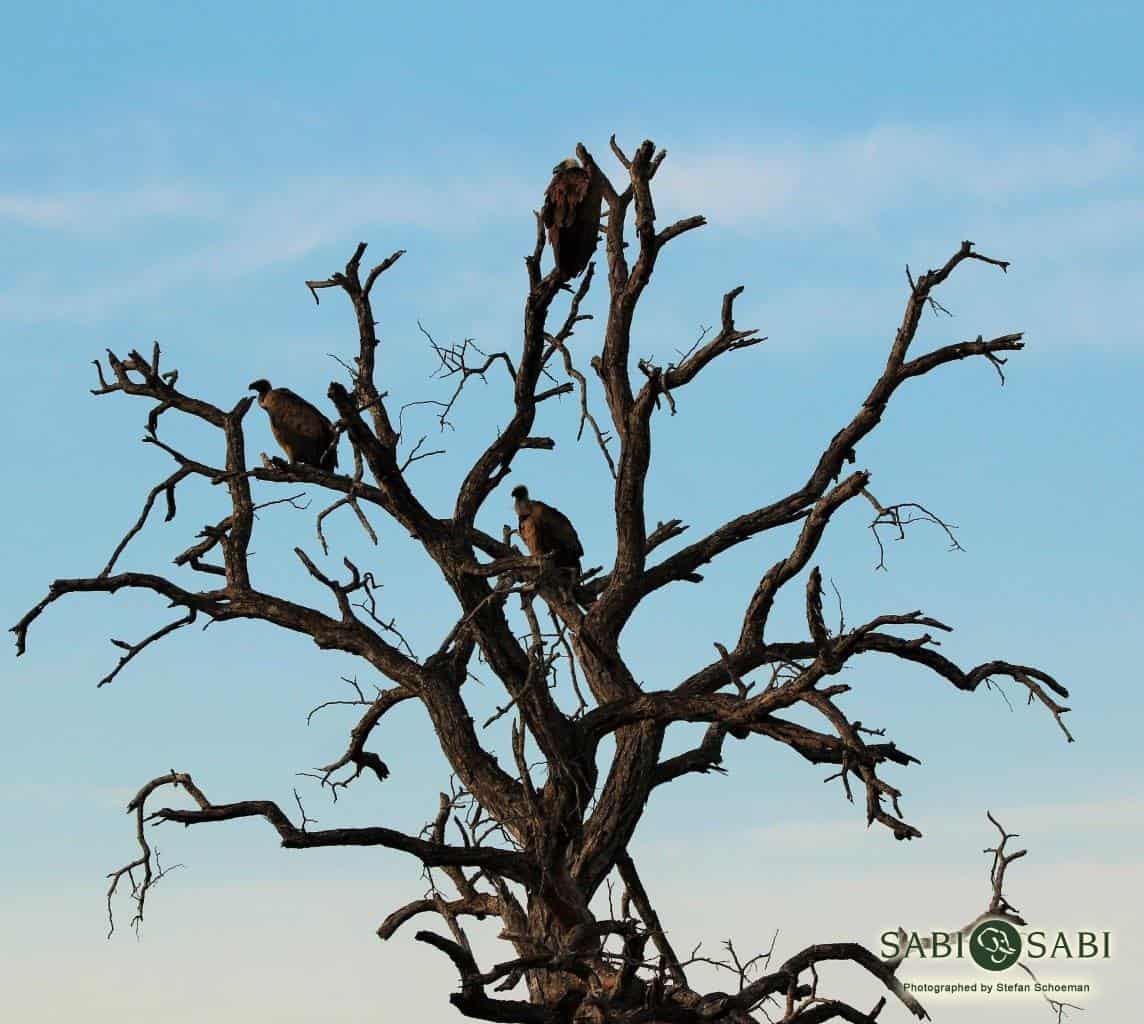White-backed Vulture
on Apr 26, 2019Species Name: White-backed Vulture
Scientific Name: Gyps africanus
Weight: 5.5 kg’s
Size: 90-100cm
General Habitat: Lightly wooded savannah
Diet: Carnivorous

Whilst classed as part of the ‘ugly five’ its apparent that these impressively large birds won’t be winning any beauty contests any time soon, but despite their quirky appearance, the White-backed Vulture plays a vital role in our ecosystem and with their numbers slowly declining, I feel it important to attract attention to these birds.
Normally on safari at Sabi Sabi, the White-backed Vulture can be spotted perched atop a dead tree, it appears often Knob-thorn trees make for the perfect spot. As the day warms up, White-backed Vultures take to the vast open skies, riding thermals which allow the avian creatures to effortlessly glide – often up to heights of 800m!
From this point their sharp eyes can scan below in search of a possible meal. As the White-backed Vulture is thought to be an especially high flier among vultures (9 species in South Africa), often they will watch the movements of vultures below in hope they may give away the position of a carcass. Otherwise the birds will keep watch directly for carrion, follow other birds known to consume carrion (such as Bateleur eagles) or seek out carnivorous mammals such as lions or hyenas.
If you have ever had the luxury of watching the shenanigans at a kill/feeding sight, it may be apparent that there is a semblance of a pecking order (literally). Lappet-faced Vultures are the largest, bulkiest and thought to be the most aggressive of all, they also fly at a lower altitude so are often the first on the scene using their large, sharp beaks to open the carcass. The White-backed Vultures often join and can often be seen hissing at one another with outstretched wings in a bid to get their desired spot and their fill. They have specialised grooved tongues with serrations for rapid feeding on softer tissues.
White-backed Vultures have recently been classified as critically endangered (IUCN) and when you learn of the reasons for this, it may leave you heartbroken and speechless. Vultures in general are Mother Nature’s clean-up crew thus essentially aiding in preventing disease. However, as with many things nowadays, it is largely due to the selfishness of man that these birds are suffering. The two main problems which the White-backed Vultures face are electrocution by powerlines and... poisoning.
Vultures are targeted by poachers where the criminals have been known to poison carcasses in a bid to prevent the birds from circling and thus drawing attention, alerting authorities and ultimately giving the location of the carcass away. They have also become collateral damage by the hands of elephant poachers who poison waterholes with cyanide in a bid to take the large mammal’s tusks. Ultimately, anything which visits that water source will be affected and anything which feeds on the carcass of the deceased will too, fall ill.
There is however still hope for these feathery angels of the bush – Vulture restaurants. These are sights set up often by farmers, in areas where Vultures naturally occur to provide poison-free carcasses. Often livestock which has died and is not fit for human consumption will be laid out in a designated open area far from powerlines and other infrastructure for Vultures to feed on. Often these areas will have surrounding vegetation and a small watering pit.
My Memorable Sighting
A while back a large bull elephant had met its end by the tusks of another large bull which, as you can imagine, meant huge numbers of Vultures feeding off the carcass. Whilst Marabou Storks, Lappet-faced Vultures and Hooded Vultures were on the scene, they were vastly out-numbered by hungry White-backed Vultures. If ever you get the opportunity to sit and observe this impressive bird at a feeding site, you will note that that is always a memorable sighting.
Photo Content













